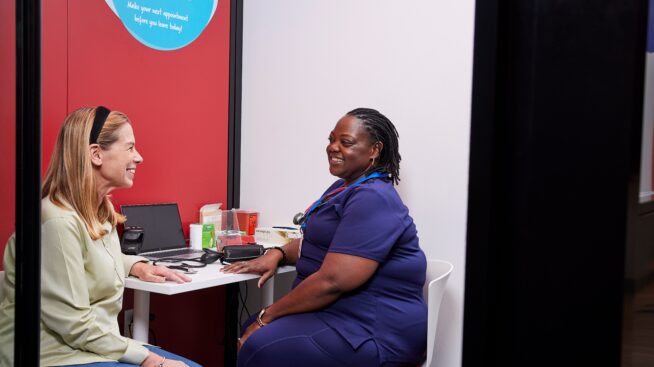Nine out of 10 individuals will need blood or a blood product at some time in our lives. And one out of every 10 hospital patients requires a transfusion. Although the average transfusion is three pints, some patients require more.
Donating blood is a selfless act by one person to help save the lives of others. Blood cannot be manufactured. Whether you’re a regular or first-time donor, visiting one of CBC’s donor centers or community blood drives is a powerful way to make a difference.
Yes, if you are aged 17 (16 with written consent from a parent or guardian) and weigh a minimum of 110 pounds and are in good health.
Visit our donor eligibility page for eligibility FAQs, which include common reasons and conditions that may permanently or temporarily defer someone from donor eligibility, but far more people are eligible to donate than actually do.
Yes. CBC cannot take your donation without first seeing a form of identification with either your photo or your signature.
We suggest you allot 45 minutes to one hour to donate blood. Donating platelets or double red cells can take longer. The blood donation procedure itself takes about 10 to 12 minutes. But it also takes time to fill out the donor registration form, have a donor history/mini-medical exam, and rest and enjoy refreshments following a donation.
You will be asked to provide some basic information (name, address, birthdate, etc.) as well as answer a number of health history questions on a registration form. Then we measure your temperature, hemoglobin content, and blood pressure to determine your donor suitability.
Visit our Hemoglobin Education page to learn more about increasing your iron levels.
Most people feel fine. It’s important to rest and eat snacks in the recovery area, eat properly before your donation, and drink extra fluids for 48 hours following your donation.
All donated blood, even donations from repeat donors, is tested for blood type, hepatitis, HIV, syphilis, and other transmissible diseases. Blood may also be separated into various components (such as red cells, platelets, or plasma) so each donation may help several people.
No. You cannot get any transmissible disease or viruses, including HIV, by donating blood. The materials used for each donation (including the needle) are sterile, disposable, and used only on a single donor.
You can safely donate your whole blood every 8 weeks, automated red cells every 16 weeks, platelets every 7 days up to 24 times each year, and plasma every 28 days.
Yes there are several. Please read the restrictions or call 800.688.0900 for the most up-to-date information on your medical eligibility.
It depends on what the vaccination was for, and deferral times will vary. Please read the restrictions or call 800.688.0900 to learn about a specific and/or recent vaccination.
The needle insertion feels like a little pinch—other than that, most donors feel no discomfort.
Yes. Most adults have between 8 to 12 pints of blood and can easily spare a pint. Volume is replaced within 24 hours and red cells are replaced within 4 to 8 weeks after donating.
No. All transfusions in the U.S. are thanks to 8 million volunteer blood donors nationwide. The demand for transfusions may increase as the population ages and more sophisticated medical care and surgeries requiring transfusion support become more commonplace.
Some rare red cells are frozen for emergency use, but thawing them is costly, requires special staff and equipment, and must be transfused within 24 hours after thawing—a fresh supply of blood is best.
No. Donated blood is perishable just like milk. Red cells last for 42 days, platelets last for 5 days, and plasma can be frozen for up to a year.
Some people have fewer antigens (proteins on their red blood cells) than others. Determining which of these proteins are absent from a person’s red blood cells involves blood typing beyond the more familiar A, B, AB, O and Rh factor. In addition to identifying rare blood types, we specially code these donated units so they can be easily found.
Indicating your race makes it easier to match your blood with a recipient. This is because blood types and antigens are inherited, just like eye and hair color. Searching for very precise transfusion matches can be like looking for a needle in a haystack, so it makes sense to begin with donors of the same ethnic or racial background as the transfusion recipient.
Nearly every donated pint of blood is transfused to a patient in need. A unit would not be transfused if it tested positive for certain infectious diseases or is needed for research.


